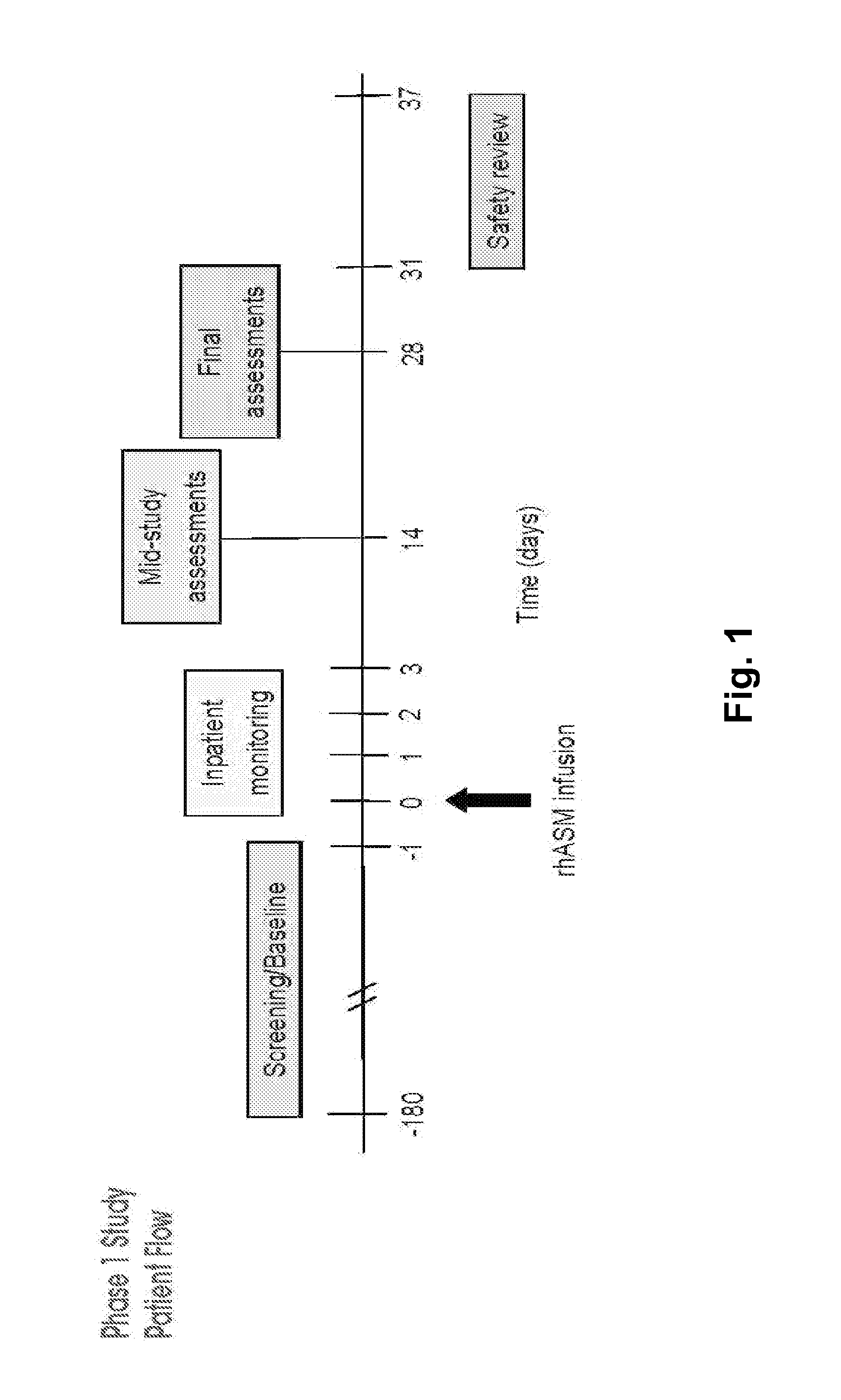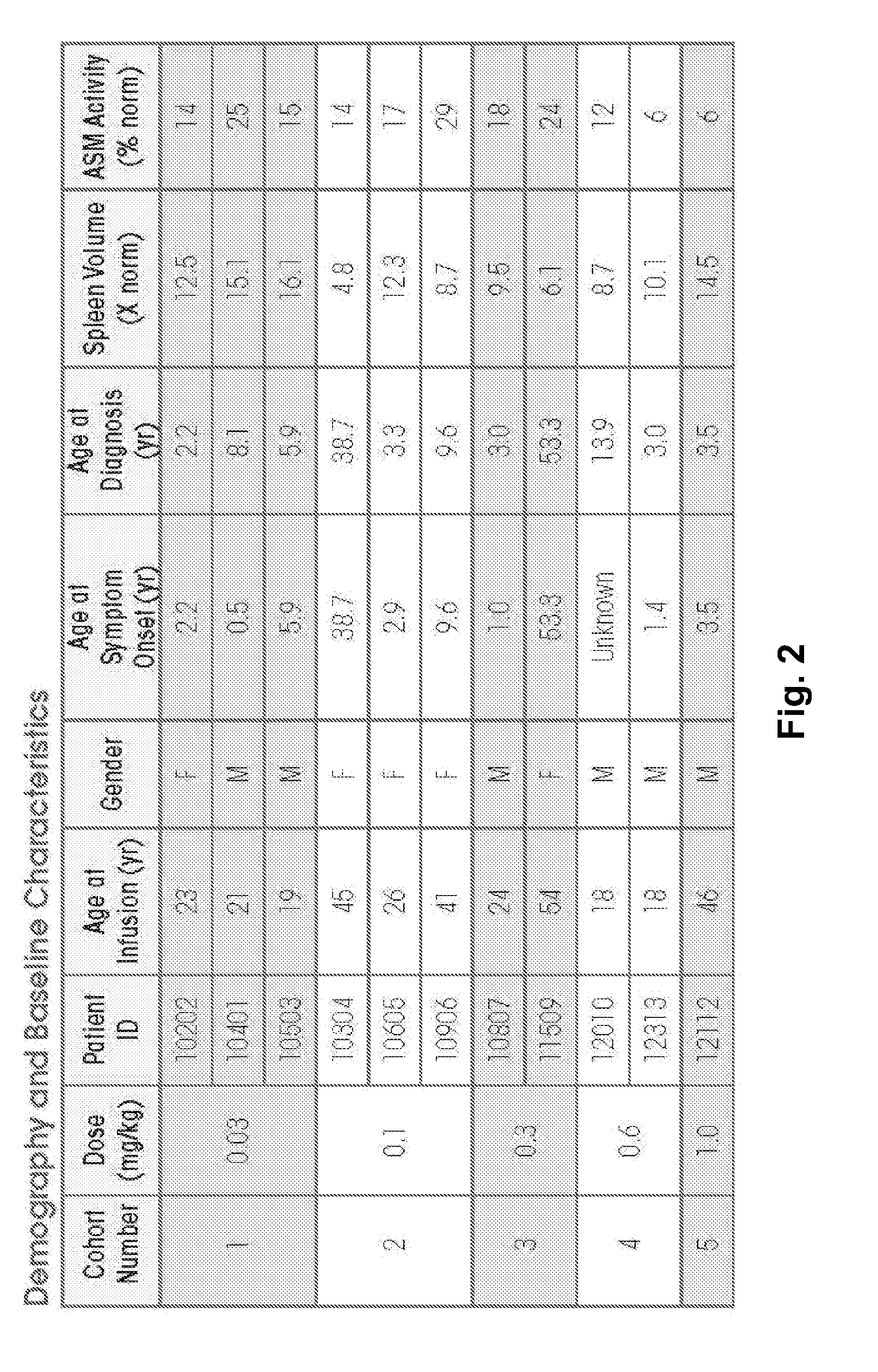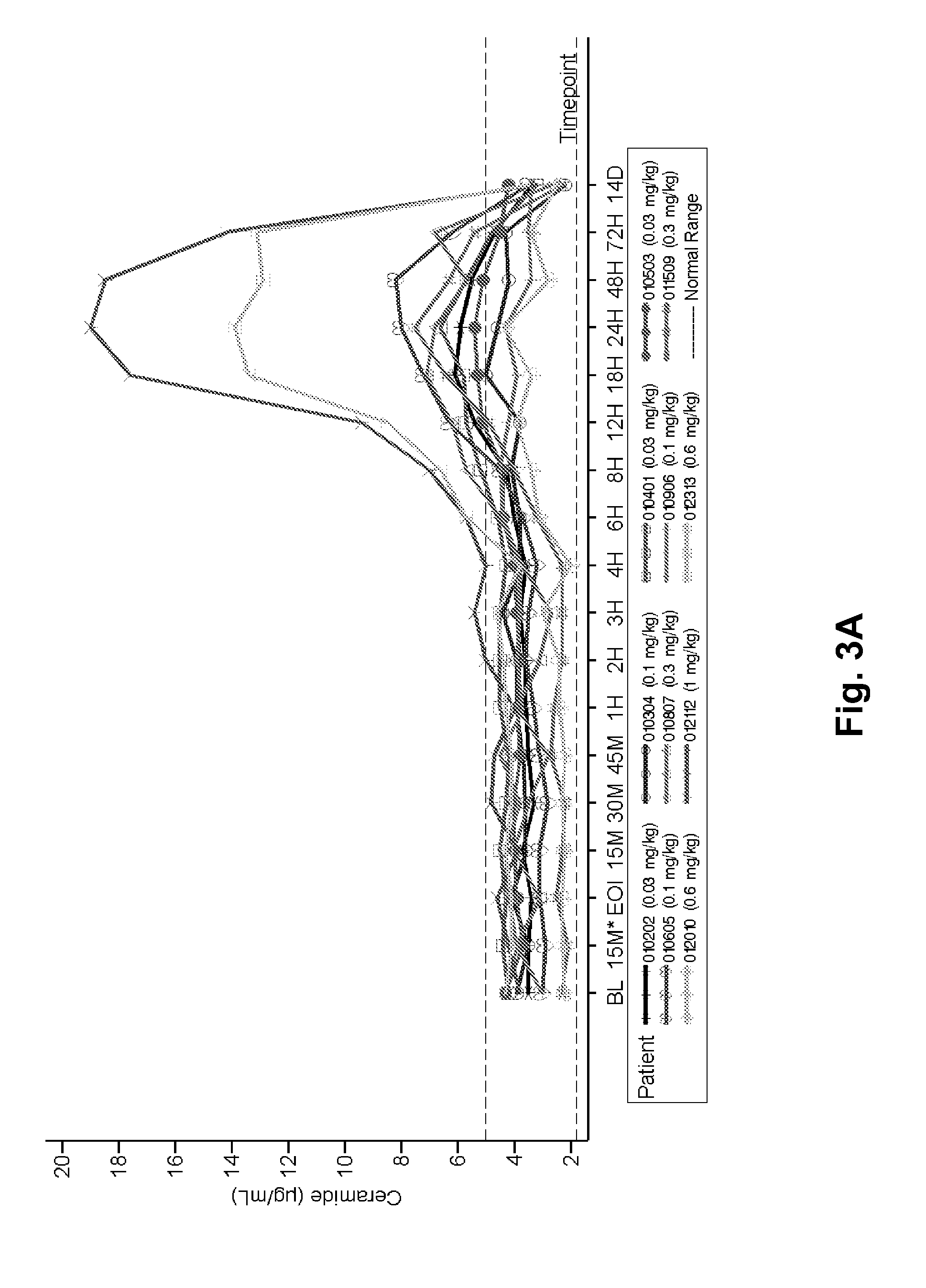Dose escalation enzyme replacement therapy for treating acid sphingomyelinase deficiency
a technology of enzyme replacement therapy and acid sphingomyelinase, which is applied in the direction of drug composition, peptide/protein ingredient, metabolic disorder, etc., can solve the problems of lysosomal storage disease termed niemann-pick disease, inability of the body to break down sphingomyelin, and impair normal cellular function, so as to reduce side effects, reduce dose, and slow down the degradation of stored substrate
- Summary
- Abstract
- Description
- Claims
- Application Information
AI Technical Summary
Benefits of technology
Problems solved by technology
Method used
Image
Examples
example 1
6. Example 1
Human Trial of Recombinant Human Acid Sphingomyelinase (rhASM) Enzyme Replacement Therapy in Human Adults with ASM Deficiency
6.1. Introduction
[0181]ASMD is an autosomal recessive, lysosomal storage disorder that results when sphingomyelin is unable to be normally catabolized to ceramide and phosphorylcholine. Consequently, sphingomyelin accumulates within cells primarily of the reticuloendothelial system, leading to hepatosplenomegaly, anemia, thrombocytopenia, and interstitial lung disease. Growth retardation and an atherogenic lipid profile also are common findings. Patients who have little to no residual ASM activity exhibit the most severe symptoms with onset in infancy, failure to thrive, neurodegeneration, and death by age 3 (Niemann-Pick disease type A, NPD A). Patients with higher amounts of residual ASM activity have variable ages of onset, heterogeneous presentations and somatic symptoms, little to no neurologic involvement, and generally survive into adulthood...
example 2
7. Example 2
Repeat Dose Intravenous Injection Toxicity Protocol Following Debulking Phase in Acid Sphingomyelinease Knock-Out Mice
[0212]This example describes the investigation of the potential toxicity of repeated intravenous administration of recombinant human acid sphingomyelinase (rhASM) following a debulking phase in acid sphingomyelinase knockout (ASMKO) mice. Having established that toxic side effects begin to be observed at initial doses of 10 mg / kg of rhASM in ASMKO mice, the following investigation was designed to determine if the administration of escalating doses of recombinant human acid sphingomyelinase (rhASM) in ASMKO mice would debulk enough of the accumulated sphingomyelin so that a higher dose of rhASM could be administered to the ASMKO mice to target sites of pathology, such as the lung and brain, with minimal or no observable toxicity.
[0213]JK ASMKO mice were administered 3 mg / kg rhASM on study days (SD) 1, 3, 5, 7 (Debulking Phase). Beginning on SD 9 and contin...
example 3
8. Example 3
Escalating Dose of Recombinant Human Acid Sphingomyelinase (rhASM) Enzyme Replacement Therapy
8.1. Introduction
[0243]The protocol described below utilizes within-patient dose escalation as an option for achieving higher repeat doses of rhASM. The safety, efficacy and pharmacokinetics (PK) of rhASM infusions at doses of 0.3, 0.6, and 1.0 mg / kg administered every 2 weeks (q2w) for 40 weeks, and long term safety and efficacy of rhASM infusions are evaluated.
8.2. Materials and Methods
8.2.1. Protocol Design
[0244]The 12 NP-type B patients to be treated are of either gender. Patients will receive at least 1 dose of 0.1 mg / kg rhASM initially. Patients that tolerate the 0.1 mg / kg rhASM infusion are then administered escalating doses of 0.3 mg / kg, 0.6 mg / kg, and 1 mg / kg every 2 weeks, as tolerated. Patients who tolerate 1.0 mg / kg are then stratified by spleen volume (<12 times or ≧12 times multiples of normal) and randomized to receive one of 2 target doses: 1.0 mg / kg rhASM or 3.0 ...
PUM
| Property | Measurement | Unit |
|---|---|---|
| concentration | aaaaa | aaaaa |
| concentration | aaaaa | aaaaa |
| concentration | aaaaa | aaaaa |
Abstract
Description
Claims
Application Information
 Login to View More
Login to View More - R&D
- Intellectual Property
- Life Sciences
- Materials
- Tech Scout
- Unparalleled Data Quality
- Higher Quality Content
- 60% Fewer Hallucinations
Browse by: Latest US Patents, China's latest patents, Technical Efficacy Thesaurus, Application Domain, Technology Topic, Popular Technical Reports.
© 2025 PatSnap. All rights reserved.Legal|Privacy policy|Modern Slavery Act Transparency Statement|Sitemap|About US| Contact US: help@patsnap.com



